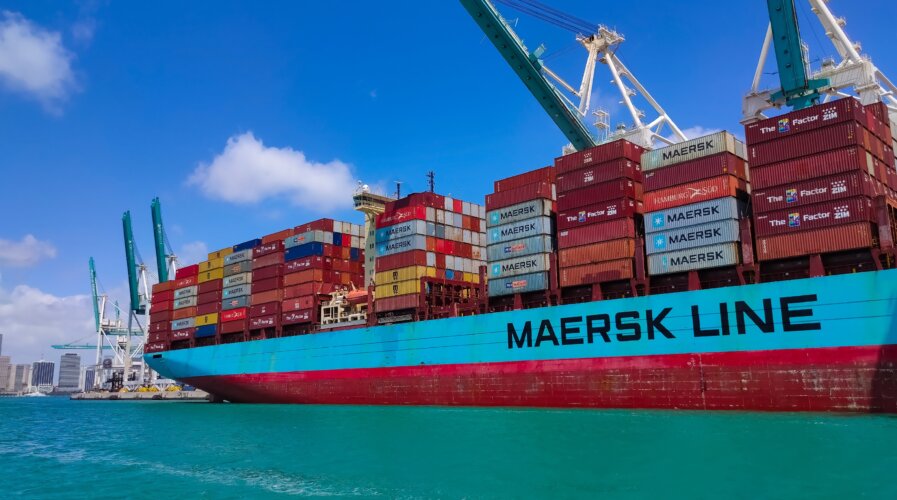
Hong Kong’s GSBN eyes global blockchain supply chain ambitions
- Hong Kong-based Global Shipping Business Network (GSBN) now operates the largest blockchain-based platform, which is considered an alternative to TradeLens.
- China and Hong Kong are investing heavily in the blockchain logistics sector to secure a dominant position.
Last year, integrated logistics company A.P. Moller-Maersk and its partner IBM terminated their digital supply chain solution, TradeLens, due to its failure to achieve “commercial viability.” This development raised doubts about the potential of blockchain technology in revolutionizing supply chain and logistics management beyond cryptocurrencies.
Despite the setbacks, industry pioneers have not abandoned their pursuit of blockchain applications in global trade. According to the South China Morning Post, Hong Kong-based Global Shipping Business Network (GSBN) is now the largest blockchain-based platform. The platform is considered an alternative to TradeLens. The company believes that a blockchain-based future for the industry is still on the horizon, but it may take another decade to materialize.
Blockchain supply chain: The rise of Chinese influence in the Web3 landscape
Since its launch in 2021, GSBN’s blockchain-based shipping platform has collaborated with major shipping partners such as Cosco, Orient Overseas Container Line, and Hapag-Lloyd. It has also formed partnerships with terminal operators like Hutchison Ports, SPG Qingdao Port, PSA International, Shanghai International Port Group, and Cosco Shipping Ports.
As GSBN currently runs the most comprehensive blockchain platform for cooperation in the shipping sector, the Web3 future of supply chains will likely be primarily Chinese. Hapag-Lloyd and PSA International, originating from Germany and Singapore, respectively, are the only significant players not headquartered in mainland China or Hong Kong.

Source – Shutterstock
GSBN CEO Bertrand Chen explained that China’s significant investments in the industry contribute to its leading position in this field. However, he acknowledged that many current solutions are highly specific to the country, establishing connections between provinces or blockchains operating within a single location.
Chen observed that significant investment in a single sector, fueled by policy, raises the chances of success. Additionally, he noted that China’s financial commitment to this field would be advantageous to GSBN, as it would create more potential partners for collaboration.
GSBN has global ambitions, seeking to engage more European shipping lines and even hoping to bring Maersk on board someday, though Chen conceded this “may be slightly challenging.”
Although GSBN is the most significant player, other companies, such as smaller data platforms like New Zealand-based TradeWindow, are also attempting to implement blockchain technology. Several leading logistics companies have promoted their blockchain solutions but have yet to see much success.
Companies like DHL, Kerry Logistics, Deloitte, Kuehne + Nagel, Amazon, JD.com, and Alibaba Group Holding have all employed or implemented blockchain technology for logistics purposes in recent years. However, many of these companies have been relatively quiet about their blockchain supply chain initiatives over the last few years, even as some claim that the Covid-19 pandemic accelerated technology adoption.
Lessons from TradeLens: Overcoming perceptions and competition
Many industry professionals concur that digitizing documents and processes related to cross-border freight movement offers high cost and time savings. However, the industry’s fragmentation makes reaching consensus on new technologies and standards difficult.
Goh Puay Guan, an associate professor of supply chain at the National University of Singapore Business School, said, “When discussing trade documents and the value proposition of reducing the amount of paper used in transactions, there is definitely a cost-saving benefit. The challenge, however, lies in getting all companies on board, as the integration benefits can only be realized through a unified platform.”
For Chen and many others, the primary issue with TradeLens was not the value proposition of blockchain, but the perception that it was a Maersk product, which could be seen as a potential competitor to other platform users. Chen explained, “The fact that TradeLens was initiated by Maersk, from a business perspective, hindered its growth. This is because some of the customers they needed to attract would say, ‘I don’t trust Maersk.'”
Chen further pointed out that he doesn’t think there was a genuine threat to user data, and no proof exists that Maersk exploited or could have exploited data from TradeLens for a competitive edge. Nevertheless, the negative perception impacted its adoption.
Moving forward: Collaboration and shared standards for blockchain success
Following the announcement of TradeLens’ closure, many concurred that the problem needed to be more specific to blockchain technology. The key takeaway is that while blockchain applications in the shipping and logistics industry face challenges, they still hold promise for the future, particularly if companies can collaborate on shared standards and overcome trust issues.
READ MORE
- Ethical AI: The renewed importance of safeguarding data and customer privacy in Generative AI applications
- How Japan balances AI-driven opportunities with cybersecurity needs
- Deploying SASE: Benchmarking your approach
- Insurance everywhere all at once: the digital transformation of the APAC insurance industry
- Google parent Alphabet eyes HubSpot: A potential acquisition shaping the future of CRM


